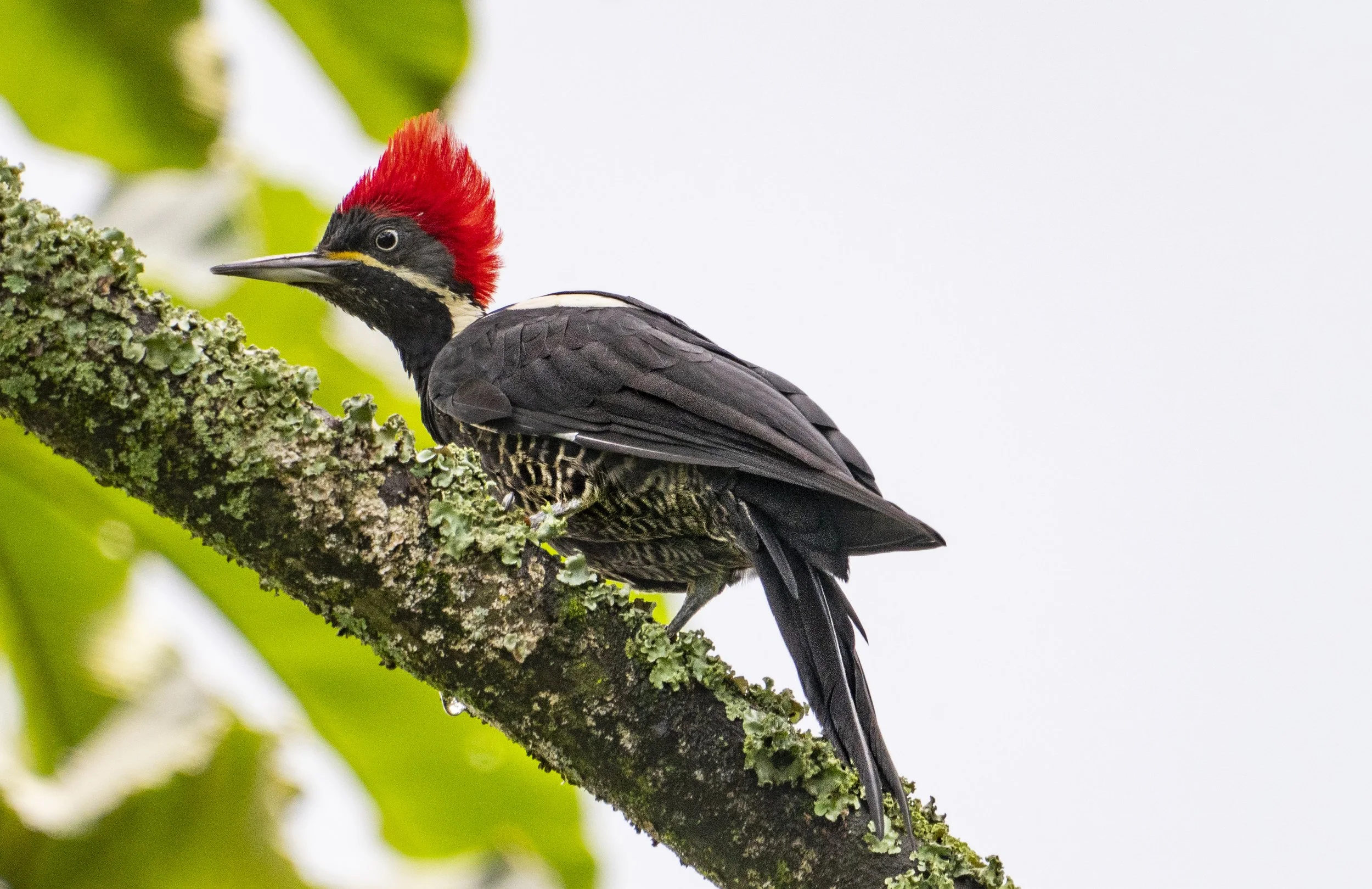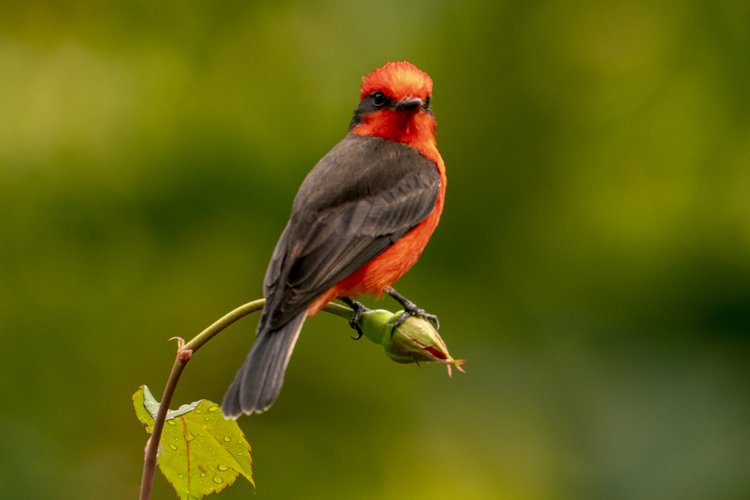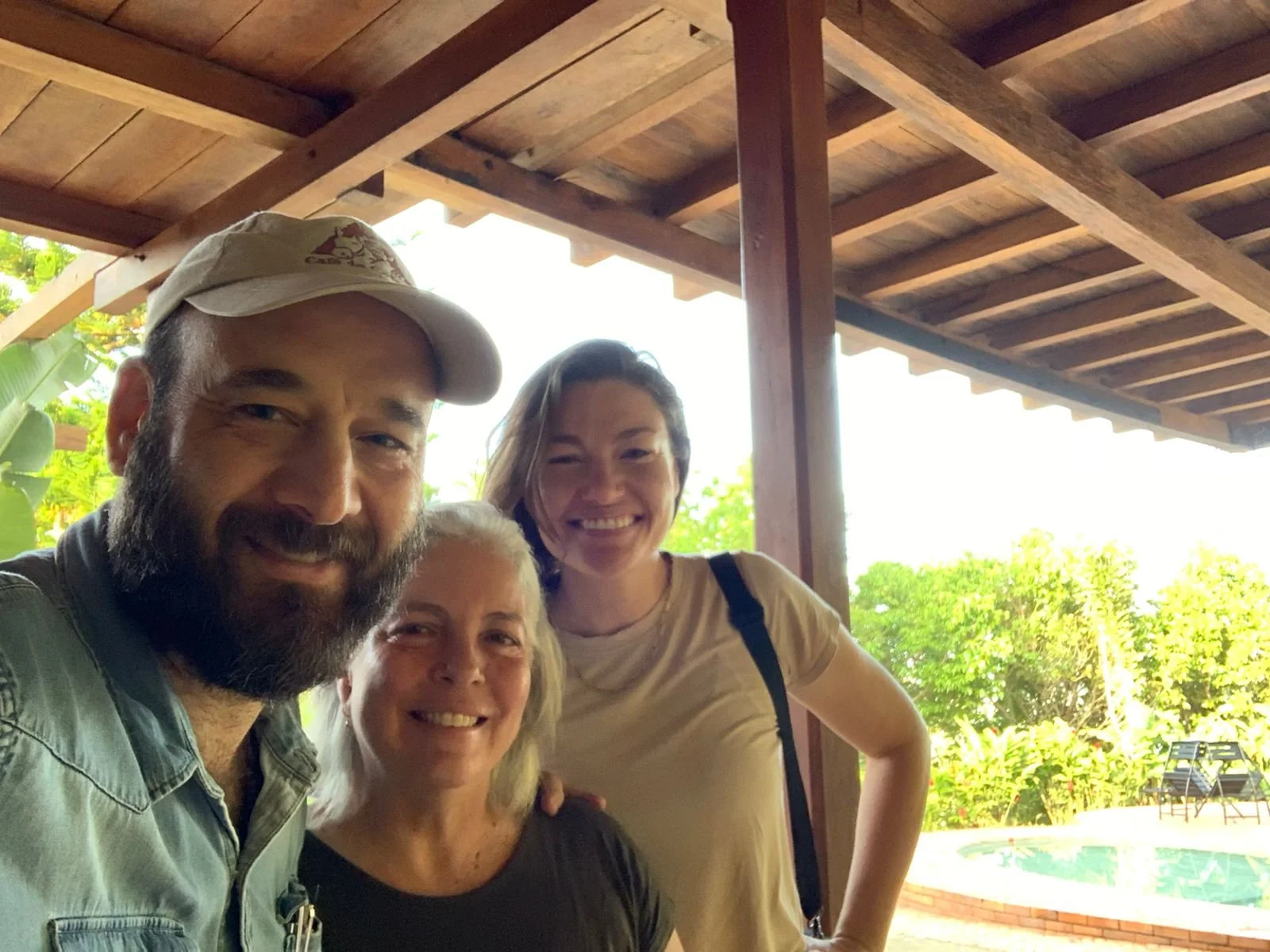Author: Victoria Restrepo, bio below
One of the most fantastic trips I have taken was my trip to go birding at "Hacienda La Sierra" in Colombia. This is one of the Tambia farms in the Central Andes Mountain Range. Colombia, with its 2,000 species of birds, is the country with the most bird species recorded in the world. The Central Andes are in the heart of Colombia. I chose this place because of its abundance of birds and because the coffee farm offered me the comfort and the perfect setting to relax, enjoy the birds, and learn about coffee.
Bird watching is my passion, and I have been traveling extensively in Colombia, photographing nature, especially birds. To get to the "Hacienda La Sierra," I travelled from Medellin, toward the city's southwest, to the little village of Palomos. From there, I went along a narrow dirt road through the mountains. As I climbed the steep elevations, I could see the beautiful coffee fields shining under the soft sunset light.
Once I arrived at the farm, I was welcomed into a traditional house with distinctive Spanish colonial architecture. The thick walls were mud and brick, and the roofs were covered in clay tiles. The wide corridors were full of flowers. A huge old tree was on the patio, where bromeliads, ferns, and orchids climbed into its large branches.
In the distance, I saw the silhouettes of the two most distinctive mountains in this region, Cerro Tusa and Cerro Bravo. They are both isolated peaks shaped like pyramids, contrasting against the central mountain range in which a series of elevations are connected.
That night I fell asleep listening to the wind blowing amid the leaves, a distant call from a nocturnal bird, and the insects chirping outside my window. The frogs were croaking as the rain fell heavily on the patio stones. It was still dark when I woke up, and a sweet aroma filled my room with the scent of coffee getting fermented. I took a deep breath and felt so lucky to be right there.
With the first light in the morning, I heard the coffee pickers laughing and singing as they arrived to pick up their buckets to start their day. Since I didn't want to miss the process, I got up and took my camera. The cool morning was wrapped in thick fog, and a gentle drizzle was falling.
The landscape was breathtaking. The house was encircled by different species of red and yellow heliconia flowers where bumblebees and hummingbirds flutter around. I could hear a woodpecker hammering a tree in the distance. I sat on an open terrace to enjoy the view while I had the traditional Colombian breakfast: Freshly squeezed tangerine juice, arepa (corn cake) with queso fresco, scrambled eggs, and a delicious cup of the farm’s specialty coffee.
The birds were singing and calling, and my desire to get out was stronger than my hunger, especially after seeing two birds flying toward a big tree. They were very noisy, and their call was a metallic "whippoorwill" sound. I recognized the loud call of the Colombian chachalacas (Ortalis Columbiana) birds endemic to this region. They are the size of a small female wild turkey and feed on various plants' berries, seeds, and fruits. They are essential for the dispersal of seeds. They have bare red skin on the throat and plain brown scaly neck and breast.
I walked toward the coffee fields. I could hear the workers. They were happy, making jokes and chanting while climbing the narrow path. The harvest season is only a few weeks long, and the workers travel from farm to farm following the ripe fruits.
I was in an enchanted and mysterious place; the fog was so thick that I felt I was floating over a fluffy and soft cloud. I could listen to the early morning birds singing, chirping, and cooing into the thick mist, but I couldn't see anything. Then I heard larger birds flapping over my head and the noisy chat of parrots, a couple of them perched in a large tree where a timid sun ray cut through the mist. Then, I saw them, a couple of bronze-winged parrots. I was very excited to see them. They were lifers for me!
Reynaldo, the crew supervisor, came to watch them, too. It was a beautiful sight, the mist moved around them, and their bronze plumage shined with the dim light. "Somedays, - Reynaldo told me - we see huge flocks flying over the crops. That is why we keep the tallest trees for them." Then he explained to me that "We knew that cutting the trees led to many species' loss. We offer tree shade of mature trees to protect our crops from the scorching sun during the dry season and because we know, we can make a big difference for the birds. We are committed to the protection of birds. They are a good indicator of environmental health."
The fog started to rise toward the top of the mountain, and the coffee fields opened. What an incredible view! The wet red beans gleamed against the dark green leaves of the coffee trees. The tall trees offered a must-needed shade for the crops and me. It was hot! I kept walking up the mountain, and the birds woke up once the early morning sun started to shine. I saw a couple of bananaquit (Coereba flaveola) hiding on a giant bromeliad.
The noisy Great kiskadees (Pitangus sulphuratus) flew from tree to tree, filling the forest with their loud, piercing "kis-ka-dee" call. I saw the tiny, blue-necked tanager (Stilpnia cyanicollis), chewing fruits from a large tree. It averages 12 cm in length and weighs approximately 17 g. It has a blue hood and throat; the beaks, legs, and feet are black. I saw the bay-headed tanager (Tangara gyrola) in the same tree with its striking colours. The body is manly blue, the head is bright red, and it has yellow gold wings. These two tanagers are some of my favourites because of their beautiful plumage. Then I found the black-billed thrush (Turdus ignobilis) and the yellow-bellied elaenia (Elaenia flavogaster). Even though they are more common, I always enjoy watching every bird.
In the distance, I heard the noisy high-pitched squeaking "sweenk" calls. The blue-headed parrots (Pionus menstruus) were approaching. They are about 27 cm long, with their body primarily green, a blue head and neck, and red under tail coverts. They feed on fruit, seeds, and grain. They roost communally in dead trees and palms, and watching them was a treat. I also enjoyed watching the flame-rumped tanager (Ramphocelus flammigerus).
The coffee plantation also receives many migratory birds like warblers and flycatchers. Their impressive journeys can take them from the backyards of the U.S. and Canada to coffee farms in the tropics. Every year the mixed flocks of migratory birds arrive at these friendly patches of forests where they can spend their winter months protected and well fed. Deforestation is one of the biggest threats to birds. Their natural habitats are being lost as they are converted to other uses, including sun-grown coffee plantations. Having a lot of species is good, especially if there are threatening or endemic species that only feed on certain kinds of food. The birds’ presence is a good indictor of the farms conscientious approach to caring for the land.
In "Sierra de Palomos", the mountains are very steep. When I looked down, their vertical slopes gave me vertigo. I saw the coffee pickers, with their buckets tied to their waists, slowly lowered themselves between the plants, looking for the cherries hidden in the trees and hand-picking only the ripest ones. I was surprised to hear their joy as they worked; they screamed, called each other, made jokes, sang, and told stories from the ends of the steep peaks, although they couldn't see each other because the plants were higher than they were. From a distance, coffee plantations seem empty, but inside gatherers work under variable weather conditions with infinite patience. Generally, the morning rains are milder, although sometimes they can last several hours. Then, the heavier afternoon showers begin, accompanied by lightning and strong winds. After a long day, the workers are exhausted and deliver their precious cargo to the scale before resting. Every day, millions of people savour their cups of coffee without even suspecting the hard work and the fantastic stories behind their steaming and aromatic drink.
La Sierra Farm has safeguarded its massive trees to provide shade to the growing coffee plants. It also protects primary forest fragments and extensive secondary forests. Their water sources are secured and shielded. They have many natural springs from aquifers filled to the point that the water overflows onto the land surface. Many run through the farm, creating creeks, waterfalls, and riparian corridors. The riparian corridors are large communities of plants and trees growing near a river or a stream. They preserve the water quality by filtering sediments before they enter the streams, protecting the stream banks from erosion, and providing food and shelter for birds and insects.
The farms have implemented sustainable coffee growing practices to make a "bird-friendly" coffee which is a source of pride for Tambia. Coffee plants are shade-grown under a multi-layered canopy of trees. They are not cultivated as a monoculture on land that has been cleared and the plantation ensures the biodiversity and the quality habitat that birds need, including nectar, fruits and berries, and birds love insects. For many growers, insects mean pests and need to constantly spray their crops with chemicals, but the birds provide natural pest control.
While enjoying my last and perfect cup of coffee grown on this land, I realized I had never thought about the environmental impacts of how the coffee was cultivated. I grew up in the Andes, surrounded by coffee fields, tropical forests, and birds. Still, I never understood the relationship between coffee and my beloved birds. Bird friendly coffee preserves critical habitat for wildlife, help fight climate change, protect biodiversity, and support farmers committed to sustainability.
Victoria Restrepo is a painter, photographer, and documentarian born in Colombia, South America. She currently lives and works in the US, traveling and documenting National and State Parks. She studied Fine Arts in Colombia and photography at the New England School of Photography in Boston, MA. You can read more Walking with Birds here.






